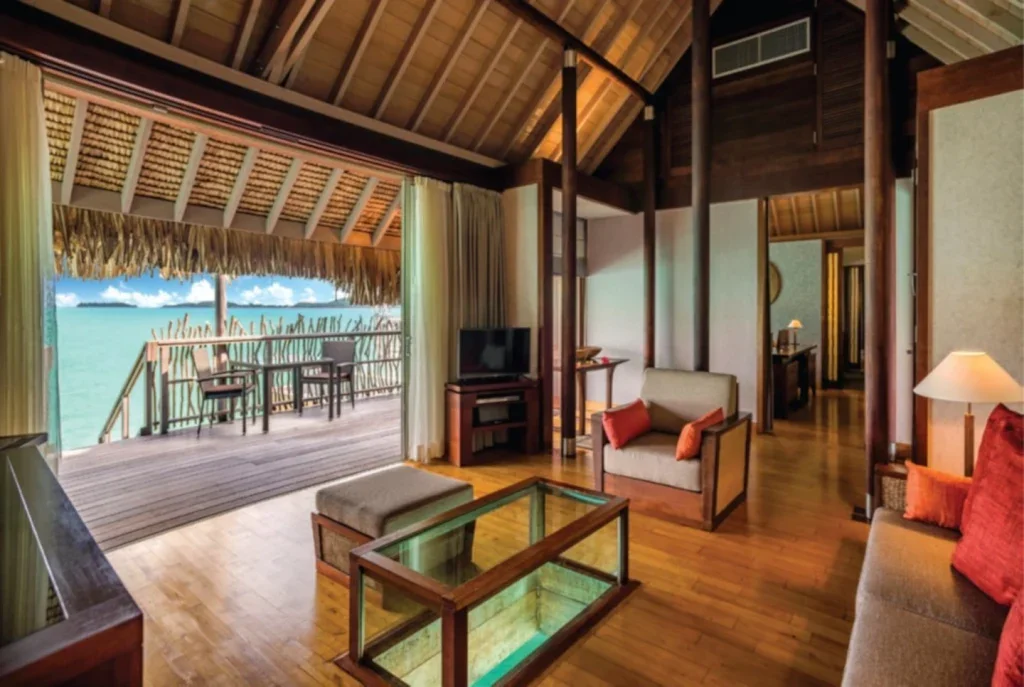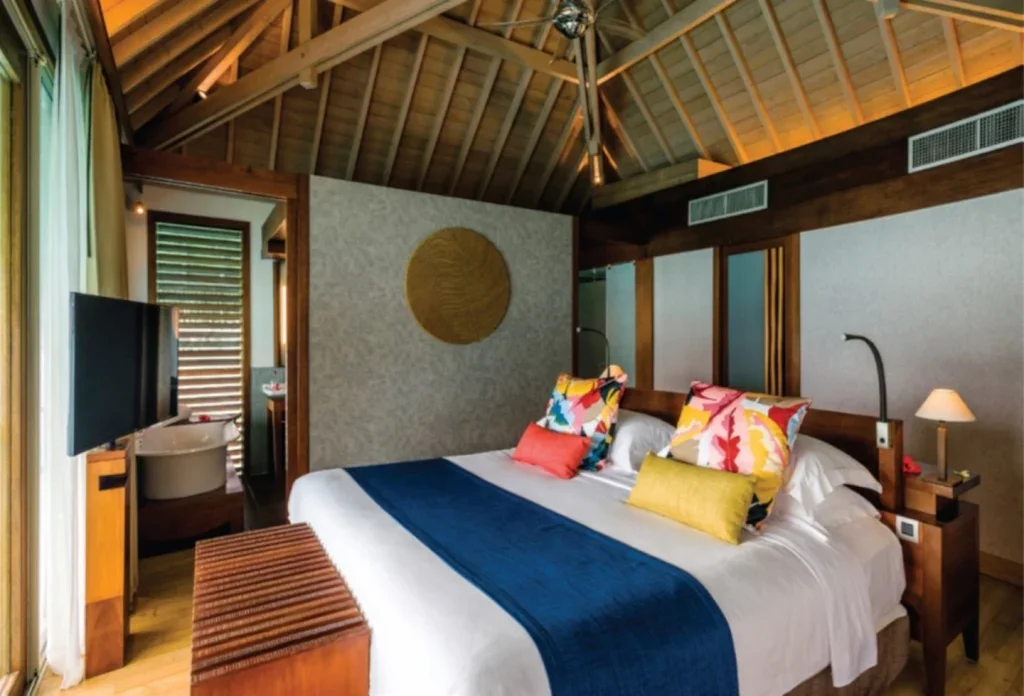
Sustainability, as we know, has become a significant trend that is reshaping the hospitality sector. While making the case for the economic and societal benefits the industry brings, the commercial and regulatory challenges across the ESG spectrum for hotels are now significant. So how can hotel owners, operators and investors respond to these challenges? The starting point is to embed awareness, skills and practices across the industry. Think back to how we did this with technology, now ubiquitous across hotel operations, asset management and development, and apply that to sustainability.
Sustainability is not a specialist area or a stand-alone service. It must be embedded throughout organisations as part of everyone’s ‘day jobs’ to deliver results for people and planet, as well as for profit. That means teamwork, which we are generally pretty good at as an industry. An attitude of ‘just give it to the sustainability team’ just won’t work.
Track it to change it
We need to learn to measure more things than we do now. One hotelier I worked with fitted a water tracking device following a damaging water leak. It has reduced risk due to early warning sensors and has helped the property reduce water consumption. They also explored foot-operated kitchen taps to reduce unnecessary water flow and improve operational efficiency. Smart sensors linked to building information management systems are becoming more commonplace in hotels. People movement can be monitored and measured, enabling heating, cooling or lighting to be managed in accordance with occupancy levels in those areas.

For example, with zonal sensors in a typical urban hotel, we could ensure appropriate levels of light/ heat/cooling in public areas and room corridors during peak versus low volume periods of the day. The widespread use will obviously depend to a degree on building codes and/or brand standards (legislation is often a necessary lever to constrain cost-cutting/short-termism in construction).
Food waste is another area where we have seen significant progress. There is a growing range of equipment for tracking and managing food ingredients as they pass from wholesaler to the diner’s plate and on into the waste bins. Waste measurement devices have proved to reduce waste volumes and therefore both food acquisition costs and disposal costs.
This is a ‘back of house’ change that the customer neither sees nor needs to be aware of, except perhaps as part of a positive marketing message if the hotel/ restaurant has waste reduction figures to be proud of. But it doesn’t all have to be behind closed doors. Silo London says it is the world’s first zero-waste restaurant.

Other trends are menus that prioritise low ‘food miles’ (distance from farm to table), serving local/regional wines, ordering menus to start with vegan/low carbon footprint options first. You could argue this is giving consumers more choice by being more transparent about impact.
In fact, expect to see more of this transparency in terms of social or environmental impact, as we are subject to greater climate-related reporting. Fron runners of this trend include Shorefast Foundation, which has created an Economic Nutrition certification mark. Modelled on the concept of food nutrition labels, it provides consumers with financial information behind a product or service. If you stay at their social enterprise, Fogo Island Inn, the label reveals how revenue is allocated across multiple categories including labour and food/supplies.
Don’t forget the guests
As we grapple with balancing economic, environmental and social aspirations, one of the barriers to sustainability efforts – especially in the luxury segment – is fear of a customer backlash. Hoteliers can be nervous that the clientele may perceive these measures as detrimental to guest experience and therefore a drop in value for money. It is also important to be aware of national or cultural expectations.
For example, the Swiss Tourism Board states clearly on its website that tap water in the country is drinkable and high quality. One particular luxury hotel provides a refillable water bottle in guest rooms, with a note informing guests that local tap water is excellent, and the bottle can be refilled from the tap in the room, saving energy and waste (single-use plastics/glass).
I discussed this with an overseas corporate group, who do not drink water from the tap at home due to poor water quality. Despite all the reassurances and their confidence in Swiss quality generally, these visitors wanted bottled water – it is not their custom to do otherwise. A situation such as this highlights how many operators will need to think creatively and tread carefully in the trade-off between guest satisfaction and sustainability. There are growing numbers of brands striving to do this well, from domestic players such as Room2, Hometels, Zeal Hotels and Beyond Apartments, to international ones like 1Hotels, Habitas and Six Senses, to name but a few. Sustainable brands are focused on reducing the embodied carbon (how much carbon was used to create the building materials and construct the asset) and operational carbon (the carbon intensity of the operations). When it comes to sustainability, communication and clear message delivery is essential to winning over the hearts and minds of the guest. Hotels must engage in a constant dialogue with their guests, explaining the positive impacts of particular actions. Education/awareness, relevance and great storytelling are critical success factors in inspiring change.
Multi-speed sustainability
While bold approaches can clearly work for new brands or niche players, when it comes to longestablished hotel ‘majors’ with multiple brands – Accor, Hilton, IHG, Marriott, for example – there are few one-size-fits-all solutions that can be adopted across every territory in which they operate due to the implications for brand standards and/or capital expenditure for the owner.
A simple example is renewable energy. The business case for solar panels is going to be higher for hotels located where sunlight is more plentiful. Or consider building performance of the world’s ‘grande dame’ hotels. Building codes are typically strict for historic buildings, and may prohibit visible solar panels, double glazing or insulation that impacts the look/fabric of the building. Improving energy performance for these assets is challenging. That said, the urgency of the climate crisis is stimulating innovation across the real estate industry and creative solutions are emerging. For example, the InterContinental Bora Bora Thalasso Resort and Spa uses sea water air-conditioning, pumping cold water from a depth of 3,000ft for its air-conditioning system. This replaced the need for expensive and environmentally damaging imported oil and reportedly generated a return on investment within seven years. Conversely, in urban destinations, district heating systems are gaining traction and can offer more sustainable heating/cooling systems for operational real estate.
Of course, the local regulatory environment will impact the speed at which ESG solutions are implemented. New initiatives such as the EU’s Corporate Sustainability Reporting Directive will have a far-reaching impact on hotels located in the bloc regardless of where the operator is domiciled. Governmental commitments (often enshrined in law, as they are in the UK, for example) towards ‘net zero’ CO2 emissions will also have a significant effect in countries where they are in place.
At least we’re on the journey
If the practical examples I’ve given highlight how difficult it is to take a universal approach to sustainability, at least be encouraged that many industry stakeholders have now set out on their journey. Nevertheless, we also need a dose of realism. The climate data is unequivocal: we are suffering from an over-heating world. The priority is to reduce emissions more rapidly. Measurement capabilities are crucial, for two reasons: a) we can change what we measure; and b) we can stay one step ahead of reporting regulations, which will only increase.

If we aim to measure everything we can (including items not previously captured), we shall have the raw data to create whatever reports/metrics become required by regulators. For that, we will need to develop and implement the right technology, while also training people to analyse data, interpret results and create change strategies to reduce asset and operational carbon intensity.
This will translate into value over time, especially if we move to some form of carbon pricing regime. The onus will fall on investors and owners to act to protect the value and saleability of their assets.

Methodologies, tools and tech are all emerging to support this growing reporting need and these will differ by stakeholder. For example, the Hotel Carbon Measurement Initiative supported by industry body the Sustainable Hospitality Alliance can generate reports on the carbon intensity of a conference or meeting. Being able to provide such data to clients for their own ESG reporting is expected to become an RFP condition for some corporate accounts.






